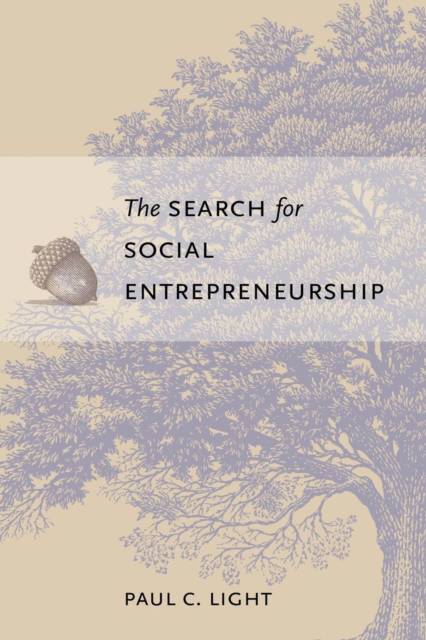
- Afhalen na 1 uur in een winkel met voorraad
- Gratis thuislevering in België vanaf € 30
- Ruim aanbod met 7 miljoen producten
- Afhalen na 1 uur in een winkel met voorraad
- Gratis thuislevering in België vanaf € 30
- Ruim aanbod met 7 miljoen producten
Zoeken
Omschrijving
Research on social entrepreneurship is finally catching up to its rapidly growing potential. In The Search for Social Entrepreneurship, Paul Light explores this surge of interest to establish the state of knowledge on this growing phenomenon and suggest directions for future research. Light begins by outlining the debate on how to define social entrepreneurship, a concept often cited and lauded but not necessarily understood. A very elemental definition would note that it involves individuals, groups, networks, or organizations seeking sustainable change via new ideas on how governments, nonprofits, and businesses can address significant social problems. That leaves plenty of gaps, however, and without adequate agreement on what the term means, we cannot measure it effectively. The unsatisfying results are apple-to-orange comparisons that make replication and further research difficult. The subsequent section examines the four main components of social entrepreneurship: ideas, opportunities, organizations, and the entrepreneurs themselves. The copious information available about each has yet to be mined for lessons on making social entrepreneurship a success. The third section draws on Light's original survey research on 131 high-performing nonprofits, exploring how they differ across the four key components. The fourth and final section offers recommendations for future action and research in this burgeoning field.
Specificaties
Betrokkenen
- Auteur(s):
- Uitgeverij:
Inhoud
- Aantal bladzijden:
- 314
- Taal:
- Engels
Eigenschappen
- Productcode (EAN):
- 9780815752110
- Verschijningsdatum:
- 15/08/2008
- Uitvoering:
- Paperback
- Formaat:
- Trade paperback (VS)
- Afmetingen:
- 153 mm x 229 mm
- Gewicht:
- 421 g

Alleen bij Standaard Boekhandel
+ 100 punten op je klantenkaart van Standaard Boekhandel
Beoordelingen
We publiceren alleen reviews die voldoen aan de voorwaarden voor reviews. Bekijk onze voorwaarden voor reviews.











